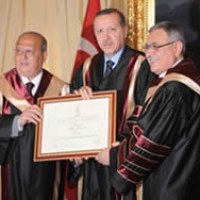Published: may 27, 2010; Arutz Sheva.
By Hillel Fendel,
Part One of a Two-Part Series: Part Two explains why Israel’s blockade on Gaza is internationally justified, given the state of armed conflict in effect between Israel and Hamas.
Israel’s Foreign Ministry (MFA) has prepared a “counter-attack” to the flotilla of anti-Israel “humanitarian” ships scheduled to arrive in Gaza later this week: a detailed account and list of aid Israel provides Gaza.
The article on the MFA website, entitled “Behind the Headlines: The Israeli humanitarian lifeline to Gaza,” begins with this introduction:
“Despite attacks by Hamas, Israel maintains an ongoing humanitarian corridor for the transfer of food and humanitarian supplies to Gaza, used by internationally recognized organizations including the United Nations and the Red Cross.”
Well over a million tons of humanitarian supplies entered Gaza from Israel over the last 18 months, equaling nearly a ton of aid for every man, woman and child in Gaza. International food aid worth millions of dollars continually flows through the Israeli humanitarian apparatus, ensuring that there is no food shortage in Gaza.
The list of Israeli aid to Gaza is so impressive that the question has been asked why Israel is doing so much for an entity with which it is in a state of armed conflict. The question is made more acute in view of the promises the Israeli government made regarding “total separation” in order to make the 2005 Disengagement from Gaza more palatable to the Israeli public.
Excerpts from the MFA report:
* Large quantities of essential food items like baby formula, wheat, meat, dairy products and other perishables are transferred daily and weekly to Gaza. Fertilizers that cannot be used to make explosives are shipped into the Strip regularly, as are potato seeds, eggs for reproduction, bees, and flower industry equipment.
* Photos in local newspapers show local markets aplenty with fruit, vegetables, cheese, spices, bread and meat.
* In the first quarter of 2010, 94,500 tons of supplies were transferred in 3,676 trucks to the Strip: 48,000 tons of food products; 40,000 tons of wheat; 2,760 tons of rice; 1,987 tons of clothes and footwear; 553 tons of milk powder and baby food.
* At holiday times, Israel increases transfers. During the Muslim holy days of Ramadan and Eid al-Adha, Israel shipped some 11,000 heads of cattle into the Strip.
* No Palestinian is denied medical care in Israel. However, if the Hamas regime does not grant permits for medical care, the Israeli government can do nothing to help the patient. Israel will facilitate all cases of medical treatments from Gaza, unless the patient is a known perpetrator of terrorism.
* Since 2005, Palestinians exploited medical care arrangements more than 20 times to carry out terror attacks.
* While the import of cement and iron has been restricted into Gaza because they are used by Hamas to cast rockets and bunkers, monitored imports of truckloads of cement, iron, and building supplies such as wood and windows are regularly coordinated with international parties. In the first quarter of 2010, 23 tons of iron and 25 tons of cement were transferred to the Gaza Strip.
* On May 13 of this year, Israel allowed approximately 39 tons of building material into Gaza to help rebuild a damaged hospital.
* The UN report of May 2010 states that while 10% of Gaza’s electricity comes from Egypt and 18% is home-made, nearly 3/4 of Gaza’s electricity needs – 72% – is supplied by Israel. Since January 2010, the supply of electricity has deteriorated because the Hamas regime is unwilling to purchase the fuel to run the Gaza City power station.
* Israel transferred 41 trucks of equipment in 2009 for the maintenance of Gaza’s electricity grid.
* In 2009, 127 trucks containing more than 3,000 tons of hypochlorite entered the Gaza Strip for water purification purposes, with Israel-UN coordination.
* The U.S., Israel, Canada, and the EU have frozen funds to the PA Hamas government since 2006, recognizing it as a terror organization. Israel has taken measures to support trade and commerce, the banking system, and the existing financial market in the Gaza Strip.
* During 2009, 7.5 million tons of flowers and 54 tons of strawberries were exported from Gaza with Israeli cooperation.
* In 2009, 1.1 billion shekels (close to $300 million) were transferred to Gaza for the ongoing activity of international organizations and to pay the salaries of PA workers. 40 million damaged bank notes were traded for new bills, and at the request of the Palestinian Monetary Fund, 282.5 million shekels were transferred from Gazan to Israeli banks.
* Israel transfers school equipment supplied by UNRWA including school bags, writing implements and textbooks. Israel is currently coordinating the transfer of 200,000 laptops for Gaza children and the shipment of 74 maritime containers for conversion into Gaza classrooms.
* In the first quarter of 2010, Israel transferred 250 trucks with equipment for the UNWRA summer camp, including arts-and-crafts equipment, swimming pools, inflatable toys, ice cream machines, musical instruments, clothing, sports equipment.
* About 20% of the population in Gaza owns a personal computer, more than in Portugal, Brazil, Saudi Arabia and Russia. They have access to ADSL and dial-up Internet service, provided by one of four providers. About 70% of Gazans own a TV and radio and have access to satellite TV or broadcast TV from the PA or Israel. Gaza has well-developed telephone landlines, and extensive mobile telephone services. 81% of households in Gaza have access to a cell phone.
* Despite the inherent dangers involved, Israel permits Gazans and visitors to travel between Gaza and Israel, from Gaza to Judea and Samaria (the West Bank), and even abroad for medical treatment, religious pilgrimages, and business trips.
* In additional to medical travel, 21,200 activists from international organizations and over 400 diplomatic delegations were permitted entry into Gaza.
Swimming Pools and More
National Post correspondent Tom Gross revealed this week that the Gaza Strip is not at all as impoverished as is commonly believed. “Western journalists refuse to report on [this] because it doesn’t fit with the simplistic story they were sent to write,” he notes. He reported specifically on a new Olympic-size swimming pool recently built in a Gaza town, something that “most Israeli towns don’t have,” and on a popular Gaza City restaurant serving gourmet meals and whose owner says business is booming.



 RSS
RSS











[…] Part 2 of a Two-Part Series. The first part of this series, a detailed account and list of aid Israel provides Gaza, can be seen here. […]
“Blockaded” Gaza is Awash in Goods #israel #gaza #aid http://j.mp/bBmeMN
RT @CrethiPlethi: “Blockaded” Gaza is Awash in Goods #israel #gaza #aid http://j.mp/bBmeMN
[…] This post was mentioned on Twitter by Elisabeth, Crethi Plethi. Crethi Plethi said: “Blockaded” Gaza is Awash in Goods #israel #gaza #aid http://j.mp/bBmeMN […]